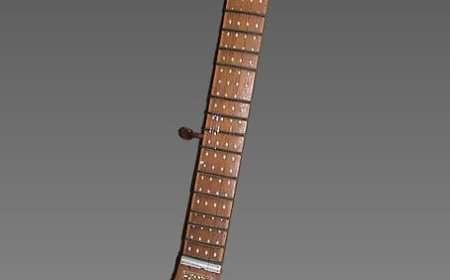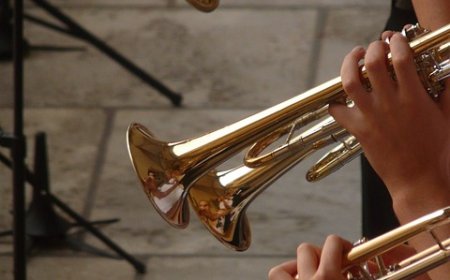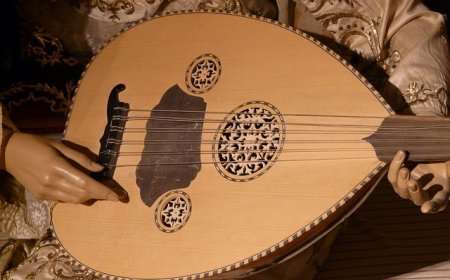Castanets Facts for Students Learn What Castanets Are and How They Work
Explore the castanets—how they work, their parts, rhythms, and history in Spanish music. A fun and educational guide for students, with facts, famous performers, and quizzes.
🥁 All About the Castanets
🥇 Introduction
Castanets are a small but exciting percussion instrument used to create clicking, clapping sounds that match the rhythms of music and dance. They’re especially famous in Spanish flamenco, but they’ve also been used in classical music, folk traditions, and even ballet. Played with the fingers, castanets are known for their sharp, fast sounds and expressive rhythms.
🎶 What Are Castanets?
Castanets are a pair of small, concave wooden shells tied together with a string. Each hand holds a pair, and players click them together by snapping their fingers and thumbs in rhythmic patterns.
There are two types:
- Handheld castanets – Used by dancers or percussionists in performance
- Mounted castanets – Attached to a board or handle and played with the fingers or sticks in an orchestra
In traditional Spanish flamenco, each hand has a specific role:
- “Hembra” (female) – Higher-pitched castanet, worn on the right hand
- “Macho” (male) – Lower-pitched castanet, worn on the left hand
Each hand plays different rhythms, which come together to form complex, exciting patterns.
🧩 Parts of the Castanets
Though castanets are small, each part plays a role in creating their sharp, percussive sound:
- Shells – Made of hardwood (like ebony or rosewood) or synthetic materials
- Concave Shape – The inward curve helps create the clicking sound
- Cord/String – Loops that connect the two shells and let them pivot
- Thumb Loops – The player uses these to attach castanets to their fingers
- Soundboard (for mounted castanets) – A surface that helps project sound in concert settings
Handheld castanets are worn on the thumbs, allowing the fingers to flick and strike the shells together in rhythm.
⚙️ How Do Castanets Work?
Castanets work through finger technique and motion. When the player presses and releases one shell against the other, the wood makes a sharp “click” or “clack” sound.
Players use different finger combinations and rolls to create rhythm:
- Single clicks – One quick sound
- Double clicks – Fast finger movement for two quick notes
- Redoble – A rapid roll (like a drum roll) made by tapping multiple fingers quickly in succession
Playing castanets requires speed, accuracy, and coordination, often matching footwork, music tempo, or dance accents.
📜 History of the Castanets
Castanets have been used for thousands of years, dating back to ancient Phoenicia, Greece, and Rome. They were used in religious ceremonies and folk dances. However, they became most famous in Spain, especially during the 18th and 19th centuries, when they were embraced in flamenco and classical Spanish dance.
In classical music, composers began including castanets to create a Spanish sound in ballets, operas, and orchestral works. Over time, castanets became a symbol of Spanish culture and rhythm.
Today, they are taught in music and dance schools, used in orchestras, and loved by audiences all over the world.
🥁 Famous Castanet Players
Although not as well-known as other percussion instruments, several performers are famous for castanet artistry:
- Lucero Tena – A legendary Spanish dancer and musician known for castanet mastery
- Emma Maleras – A famous castanet soloist and teacher who helped preserve the tradition
- José de Udaeta – Brought castanets into concert halls and trained many students
- Carmen Amaya – A flamenco dancer who made castanets a part of her iconic style
- Inma González – A modern castanet performer who blends tradition with innovation
These performers showed that castanets are more than rhythm—they’re an art form.
🎶 Learning to Play the Castanets
Castanets are a great instrument for students who enjoy music, rhythm, and movement. Learning to play them builds finger strength, timing, coordination, and musicality.
Beginners start by:
- Wearing the castanets correctly on the thumbs
- Practicing clicks with each hand
- Learning basic patterns like TA, RI, PI, TA
- Mastering rolls and combinations
- Playing along with music or dancers
Castanets are often taught in Spanish dance classes but are also played in school percussion groups and orchestra settings with mounted versions.
😄 Fun Facts About the Castanets
- Castanets are called “palillos” in some parts of Spain.
- The “redoble” technique sounds like a tiny drum roll!
- Castanets are often used in the Nutcracker ballet and Carmen opera.
- Some professional castanets are made from rosewood, ebony, or fiberglass.
- They are used in flamenco, folk music, ballet, and even film scores.
- Flamenco dancers often click castanets while dancing fast footwork!
👧 Kid-Friendly Summary
Castanets are small instruments that make clicking sounds when you hit them together with your fingers. People in Spain use them to make music and rhythms while they dance. You wear them on your thumbs and play them with your fingers. They’re fun, fast, and full of energy!
📚 Vocabulary Words
- Castanets – Small percussion instruments made of two wooden shells
- Flamenco – A Spanish dance style where castanets are often used
- Shells – The two parts of the castanet that make the clicking sound
- Redoble – A roll or fast pattern played on castanets
- Thumb Loops – The string loops that go over your thumbs to hold the castanets
- Mounted Castanets – Castanets attached to a surface for use in an orchestra
- Palillos – Another Spanish word for castanets
- Click – The basic sound made when the shells are struck together
❓ Interactive Quiz
1. What country are castanets most closely linked with?
A. France
B. Spain
C. Italy
D. Germany
2. What are castanets made of?
A. Metal
B. Plastic
C. Wood
D. Fabric
3. How are castanets played?
A. With sticks
B. With a bow
C. With fingers
D. With mallets
4. What is the name of the fast roll played on castanets?
A. Redoble
B. Tumbao
C. Cáscara
D. Flam
5. What kind of dance often uses castanets?
A. Ballet
B. Flamenco
C. Tango
D. Waltz





















































